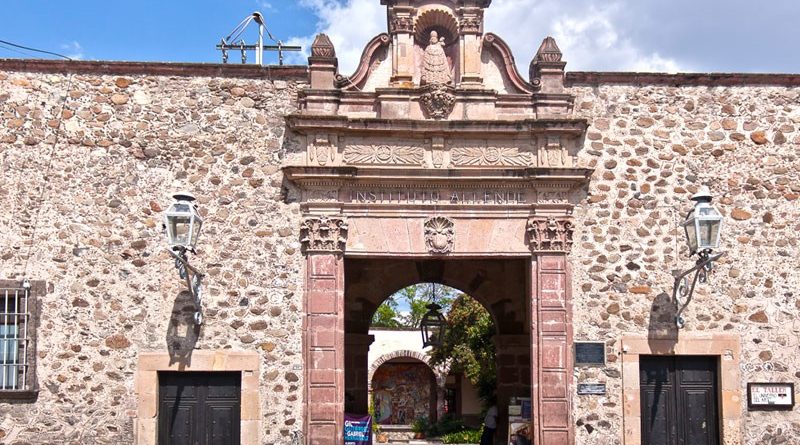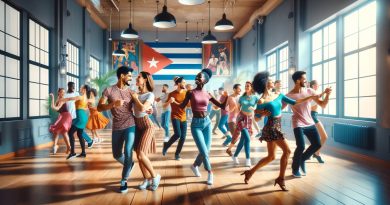HISTORY OF ART IN SAN MIGUEL: The Instituto Allende, Part I
By Natalie Taylor
One of the iconic places in San Miguel is the Instituto Allende. It is a popular wedding venue, with one of the most beautiful courtyards that appears as you come through the massive doorway. That is only the start. There is an art gallery, a coffee shop, and as you wind your way to the back courtyard, you are confronted with one of the loveliest views of the Parroquia. And of course, next door is the School of Art started by Sterling Dickinson in the 1940s.
But there is much more than this. The Instituto is a historic relic that has gone through many transformations over its three centuries of existence. It was, first of all, the grand home of one of the wealthy Spaniards who came to live in the town of San Miguel el Grande—the name of the city then. Manuel Tomas de la Canal, a merchant from Mexico City, arrived in San Miguel in 1731 or 1732, and soon after, married Maria de Hervas. Within a year or two, they built this mansion which became home to them, and their nine children who were all born here.
The family home occupied a huge parcel of land—the city entire block flanked by Nemesio Diez on the north, and Cardo on the south end. To the east, the property extended to where Rosewood Hotel property is at the present time. The western perimeter ran all the way into what is today Hotel La Aldea. All of this was the family’s orchard, with numerous fruit trees. Ancha de San Antonio did not exist, it was simply a field, which was turned into a vineyard—one of the first in New Spain.
We do not know which architect designed the building, but it was constructed in the typical fashion of a wealthy Spanish manor. A solid exterior with a gigantic wooden door leads to a spacious courtyard with vegetation, a central fountain, flanked by colonnades on four sides. All is still as it was originally, though a lot of the structures have been restored and renovated over the years.
One spot, however, remains as it was then—the private chapel of the de la Canal family. A chapel was always a feature in a wealthy home in that era, it was a place for prayer, and for celebrating mass on special occasions. The private chapel at Instituto Allende is in the southeastern corner of the property and is behind grated, locked doors. A look inside reveals an altar, and several paintings and religious objects hanging on the walls. But the special feature of this tiny, private space is on the ceiling. The entire vaulted ceiling is decorated by a mural. The value of the mural is not only in its former beauty, it is also because we know who did it—Miguel Antonio Martinez de Pocasangre, the same one who created the intricate murals in the church of Atotonilco.
Little is known about Pocasangre, not even the exact date of his birth somewhere in the Bajio region. The quality of his drawings, the excellent choice of colors, and the superior technique used would indicate someone with a formal artistic background. However, Pocasangre was a self-taught artist. Yet somehow he acquired the knowledge, and skill, to create the magnificent murals at the chapel in Atotonilco that earned the moniker: The Sistine Chapel of Mexico.
One can only imagine what the works, now badly deteriorated in the chapel, may have looked like in their full glory, when painted sometime in the 1740s. Today the paint is chipped and broken off, and moisture has caused severe damage to the painted images—the people and scenes are hardly discernable. But the beauty of the paintings and decorative elements still peek through the accumulation of hundreds of years.
These are a few samples of close-ups of the images in the mural. In spite of their age, and deterioration they are quite lovely.
Many paintings hang on the walls of the chapel, some of excellent quality, others of interest because of the iconography. The picture on the left is of the face of Jesus as it supposedly appeared on a cloth used by Saint Veronica to wipe his blood and sweat. The painting on the right is of Saint Sebastian of Aparicio—a XVI century Franciscan monk of New Spain. He was beatified by Pope Pius VI, in 1789, joining the ranks of other Mexican saints.
Below, on the left, is a portrait of Josefa Lina de la Canal, the family’s eldest daughter. After her parents’ death, she became a nun and founded the church and convent la Immaculada Concepcion, also known as Las Monjas. On the right, is a painting of Saint Michael the Archangel, in his typical depiction as the demon slayer. There is neither date, nor artist’s name on either of these paintings.
Manuel Tomas and his wife Maria died in this house in 1749, within two weeks of each other. Their eldest son inherited the entire estate, and built his family home on Canal Street, which is known as Casa del Mayorazgo. It has been the property of Banamex for many years, and aside from its function as a financial institution, it is currently also a museum, and a venue for fine art exhibits.
The original home, known today as Instituto Allende, became a “country home” for the Canal family after the passing of the parents. In 1810 the beginning of the War of Independence drove the majority of Spanish residents away from San Miguel. They fled, leaving their beautiful homes empty and the buildings eventually deteriorated over the next century. The home of Manuel Tomas de la Canal suffered the same fate, and I will continue its story in the next article.




